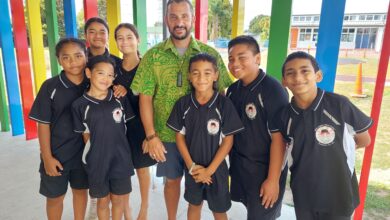Literacy teaching – one size does not fit all

New Zealand education rightly has a good reputation for quality, however we do less well with children who struggle with literacy.
In New Zealand, we score well overall for literacy achievement and our high achievers are among the best in the world. However, we do less well with children who struggle with literacy and the Ministry of Education (MoE) itself has expressed the view that we are failing to cater sufficiently well for one in five learners.
From a class teacher’s perspective, it can be puzzling – and sometimes demoralising – when the same literacy approach is successful with some learners, but fails with others. Why do some fall through the gaps when others succeed?
One factor is the huge differences in reading readiness when children first start school. As every new entrant teacher knows, some children start school already reading and with good vocabularies and others have barely been exposed to books. It is well recognised that pre-school language exposure plays a vital role in the development of phonological awareness, which research shows is the most significant predictor of literacy success (Bradley & Bryant, 1978).
Another factor is the huge difference between the amount of reinforcement a ‘normal’ reader needs, compared with the amount needed by dyslexic learners. Some research suggests that a non-struggling reader needs only four to ten exposures to a word, whereas a dyslexic or similarly struggling learner may need more than 1,000 exposures to the same word (Bateman, 1991).
These are just some of the factors which lead to the situation where, in an average classroom, there is a dauntingly large spread of literacy levels. A recent research study carried out in a North Canterbury primary school measured literacy levels for every child in year two. Despite the fact that this was a small rural school with only 52 children in that age-group, the literacy spread was from two years behind chronological age to four-and-a-half years above. A six-and-a-half year spread of literacy level in a relatively small group of seven and eight-year-olds! Makes a nonsense of ‘Here’s your spelling list – I’ll test you on Friday’, which is, depressingly, the spelling approach adopted by many schools.
The reality in most New Zealand classrooms is that there is not sufficient structure to cater for learners who need a far more explicit approach – one which actively develops the underlying phonological skills, but also develops phonic knowledge and skills.
Key issues in many NZ schools include:
- Spelling completely detached from other aspects of literacy – often a list of spelling words is given, without even ensuring that learners know what the words mean, let alone that the words can be read – and written – in context.
- No emphasis on the word family and phonics approaches, which teach the building blocks of literacy. Spelling lists tend to be chosen from high frequency lists with no attempt to teach phonic patterns or develop analogical transfer.
- Same materials for every learner in the class – as the study above clearly shows, one list will be ridiculously easy for some learners, but totally impossible for others.
- No continuity throughout the school, leaving each teacher to ‘reinvent the wheel’.
Luckily, it’s relatively easy to ensure that the school employs a research-based approach to literacy – one which emphasises phonic patterns and word families, as well as high frequency words. However, up until now, it has not been so easy to enable learners to progress at their own individual levels. However, new technologies can provide a solution.
Although many teachers rightly have reservations about using technology to replace teaching, well-designed programmes can support teaching and, crucially, enable every learner to progress at their own individual rate. A well-designed programme ought to enable every learner to work at his/her own level, and provide continuity throughout the school. Ideally, it should only aim to provide the core reading and spelling skills, freeing up the teacher to provide the exposure to real texts, reading and discussion activities, free writing and other aspects of the literacy curriculum. However, it will enable each child to develop those core skills and knowledge at his/her own level and speed, and technology is now capable of analysing each child’s errors and providing individualised reinforcement.
Thirty children in a class – at 30 different levels! Not a pipe dream any more – but certainly a recipe for success for many learners who are currently struggling.








True! One size doesn’t fit all.
Due to the difficulties many children with Dyslexia (Specific Learning Disabilities) have, accessing the curriculum in the mainstream setting, the Seabrook McKenzie Trust established the Jean Seabrook Memorial School to help these children. This school caters solely for children with severe learning disabilities including Dyslexia and Dyspraxia.
While the NZ Curriculum is followed, it is delivered at the pace suitable to individual needs of the learners. All learning is based on each child’s ability and programmes are planned to ensure learners experience success. Teaching methods used have been well researched and proven successful for children with Specific Learning Disabilities.
The school has two classes with a maximum of 12 pupils in each. The child /teacher ratio is 1:6. Weekly Occupational Therapy sessions and social skills sessions run by psychologists are all part of the weekly activities.
You mentioned technology being able to assist.. what programmes/apps would you recommend?
Hi Claire, you may find this article from School News, term 1, 2017, to be helpful
http://www.schoolnews.co.nz/2017/03/online-literacy-tools-to-support-your-readers/